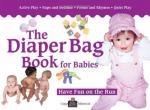|
This section contains 727 words (approx. 3 pages at 300 words per page) |

|
Crying in infants is a normal, healthy means of expression and communication. The average six-week-old baby cries for two-and-a-half hours every day. Infants cry because they are hungry, uncomfortable, in pain, overstimulated, tired, or even just bored. A new mother can distinguish her infant's crying from that of other babies within three days, and some fathers can make this distinction as well. Infants have several distinct cries. A hungry cry begins softly and then becomes loud and rhythmic; an angry cry is similar to a hungry cry but louder. A cry of pain has a distinctive pattern, beginning with a single shriek followed by a short silence and then continuous loud wailing. Neglected or abused infants have a high-pitched cry that is difficult for adults to tolerate. This type of cry is characteristic of babies born to crack-addicted...
|
This section contains 727 words (approx. 3 pages at 300 words per page) |

|


